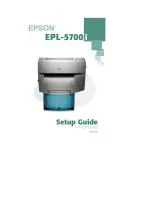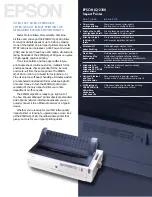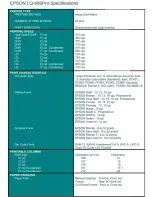
A Strategy for Successful (and Great!) Prints
Michael Hackney is one our forum moderators over at the SeeMeCNC forum and he's
been gracious enough to allow me to publish his wonderful guide for getting the most out of
your SeeMeCNC 3D printer. You can find his original thread here:
http://forum.seemecnc.com/viewtopic.php?f=36&t=7361
Some of the links below reference part files that are stored on the forum itself. You may
need to create a forum account to reach them. I highly recommend doing this whether or not
you need the files. The SeeMeCNC is an excellent resource with a vibrant, helpful and very
newbie-friendly community.
I've watched folks struggle to achieve the results they want/expect here for several years
- heck, I was one of us. Like all new endeavors, there IS a learning curve with 3D printing. This
is still the pioneering era for desktop printing and we are very fortunate to have such a great
community here as well as other resources on the web. But the challenge with all the
information out there is finding it when
YOU
need it and deciphering the many different opinions
and practices - some of which are good and some of which are, well, let's just say "poppycock".
There are many different means to the same end but I assert that those who figured
something workable (AND reproducible) out most likely took a disciplined approach to reach
their goals rather than the shotgun approach of trying one thing after another. So, I thought it
would be helpful to describe a method that you can use to 1) develop a reproducible approach
to successfully printing the things you want and 2) improving the quality of your prints to meet
your (realistic) expectations. I'll likely do this as a series of posts starting with this one. Don't
hesitate to join in or ask questions. After some time, I'll consolidate the posts into a single
source (maybe a pin here) that will make it easy to find.
On board? Let's go!
#1 Get Experience
.
Start with the printer. This is more difficult than it seems because without experience, it is
hard to know if you have a mechanical or electrical issue, slicing issue or if something else is
going on. So, to that end, keep things simple until you have some experience. By "simple" I
mean, don't print the Eiffel Tower model to start, print a simple, reproducible and small item
many, Many, MANY times until you nail it. For me, I used the calibration cube. In retrospect, I
should have picked something much simpler (see strategy #2).
#2 Start Simple.
We have a tendency to want to jump ahead to more complicated prints, faster printing,
bigger prints, etc. There are many aspects to successful 3D printing, everything from the printer
(which in itself has a mechanical system, electronics system, hot end, extruder, heated bed,
firmware), to the slicer (and all of the parameters available to control the slicing), to the filament
itself, to the actual item being printed. With so many variables (100s, maybe 1000s of them) it is
really important to pin down as many of them as you can.
95










































